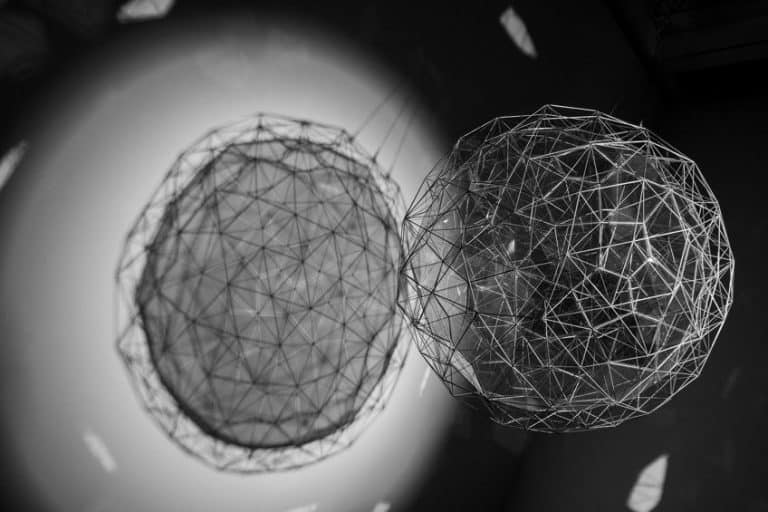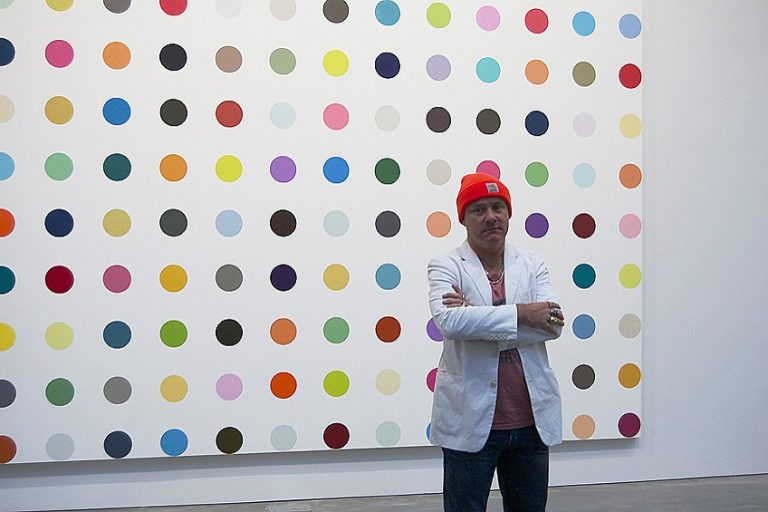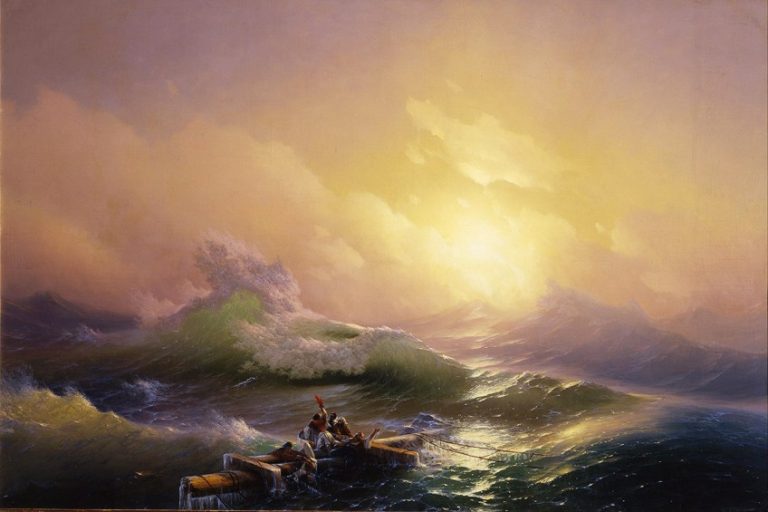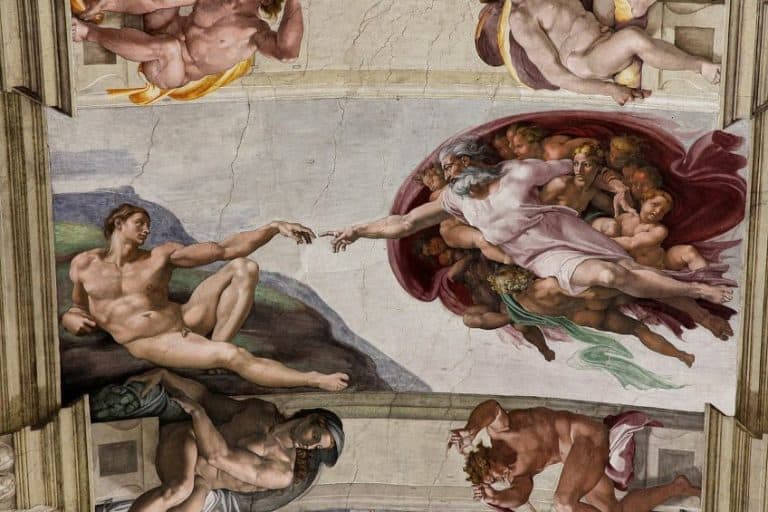Famous LGBT Artists – Expressing Queerness Through Art
In the vibrant world of artistry, the contributions of LGBTQ+ creators have left an indelible mark on the canvas of history. From the pioneering brushstrokes of gay artists to the groundbreaking works of gay painters, as well as the innovative expressions of queer artists, this article illuminates the lives and artistic legacies of some of the most renowned figures in the realm of art who have proudly embraced their LGBTQ+ identities. This article delves into the lives and creations of important LGBTQ+ artists and the intricate interplay between their personal journeys and artistic triumphs, shedding light on how their diverse experiences have enriched the global art scene and fostered inclusivity for generations to come.
Getting to Know Famous LGBT Artists
Art has always been a mirror reflecting the complexity of human identity and experiences. Within this vast and diverse realm, LGBTQ+ artists have carved out spaces of creativity, resilience, and authenticity. This article embarks on a journey through the career and artworks of some of the most influential LGBTQ+ artists, whose contributions transcend the confines of their sexual orientations and gender identities.

Tamara de Lempicka (1898 – 1980)
| Date of Birth | 16 May 1898 |
| Date of Death | 8 March 1980 |
| Place of Birth | Warsaw, Poland |
| Nationality | Polish |
| Mediums | Painting |
| Periods | Pop art and Contemporary art |
Tamara de Lempicka, a renowned Polish bisexual painter, is celebrated for her groundbreaking contributions to the Art Deco movement of the early 20th century.
With a distinctive and captivating style, she forged a path that combined elements of Cubism and Neoclassicism to create her own unique visual language.
De Lempicka’s art is characterized by its bold use of color, geometric forms, and a sharp focus on the human figure, often depicted with a sense of sensuality and sophistication. Her portraits and compositions exude an air of glamor and luxury, capturing the essence of the Roaring Twenties and the Art Deco era.
Visual Analysis and Conceptual of Girl with Gloves (1929)
| Title | Girl with Gloves |
| Date | 1929 |
| Medium | Oil on plywood |
| Dimensions (cm) | 45.5 x 61.5 |
| Location | Georges Pompidou Center, Paris, France |
Girl with Gloves is a visually striking Art Deco masterpiece. It portrays a confident young woman against a backdrop of bold geometric shapes, capturing the essence of the Roaring Twenties. The subject, elegantly dressed in a sleek green gown, exudes sensuality and confidence, a hallmark of de Lempicka’s portrayal of women. The use of vibrant colors and bold lines, especially the contrast between the green and the dark background, creates a visually arresting composition. De Lempicka’s meticulous attention to detail is evident in the girl’s facial features, hair, and dress folds, enhancing the painting’s realism. The play of light and shadow adds depth.
Conceptually, the artwork embodies Art Deco’s elegance and sophistication, celebrating the modern, independent woman of the Jazz Age. It challenges traditional gender roles with the girl’s confident posture and direct gaze. The geometric shapes and angular lines reflect Art Deco’s mechanized aesthetics, influenced by Cubism and Neoclassicism, creating dynamic tension in the composition.
Ellsworth Kelly (1923 – 2015)
| Date of Birth | 31 May 1923 |
| Date of Death | 27 December 2015 |
| Place of Birth | Newburgh, New York, United States |
| Nationality | American |
| Mediums | Painting, sculpture, and printmaking |
| Periods | Minimalism, Hard-edge painting, Color field, and Post-painterly abstraction |
Ellsworth Kelly, an eminent figure in American art history and gay painter, is celebrated for his profound contributions to abstract art. With a career spanning over six decades, Kelly’s minimalist and geometric compositions are known for their harmonious balance of shape, color, and form.
His art challenges the boundaries of perception, offering viewers an immersive experience that celebrates the beauty of simplicity.
Kelly’s work, characterized by bold, monochromatic canvases and crisp lines, is a testament to the power of abstraction in evoking emotional and visual resonance. His enduring legacy continues to inspire artists and art enthusiasts, emphasizing the timeless allure of pure abstraction and Kelly’s unparalleled mastery of this genre.
Visual Analysis and Conceptual of Red Blue Green (1963)
| Title | Red Blue Green |
| Date | 1963 |
| Medium | Inkjet print |
| Dimensions (cm) | 60.96 × 91.44 |
| Location | N/A |
Blue Green Red by Ellsworth Kelly is a visually captivating artwork marked by its vibrant colors and minimalistic composition. The piece consists of eight large-scale vertical panels, each painted 3 bold colors—blue, green, and red. The uniformity of color and the stark absence of any figurative elements create a sense of pure abstraction, allowing the viewer to focus entirely on the interplay of color.

Blue Green Red explores the dynamic relationships between colors and the emotional responses they evoke. The work prompts contemplation on how color can elicit varying moods and perceptions, showcasing Kelly’s fascination with the nuanced complexities of human perception and the subtle shifts in meaning that can arise from the simplest of visual elements.
Robert Rauschenberg (1925 – 2008)
| Date of Birth | 22 October 1925 |
| Date of Death | 12 May 2008 |
| Place of Birth | Port Arthur, Texas, United States |
| Nationality | American |
| Mediums | Painting, collage, and assemblage |
| Periods | Modern art, Pop art, Abstract expressionism, Neo-Dada, and Postmodernism |
Robert Rauschenberg, an iconic figure in 20th-century American art, is celebrated for his groundbreaking contributions to the realms of Pop Art and the Neo-Dada movement. With a career spanning decades, Rauschenberg defied traditional artistic boundaries, continually experimenting with mediums and techniques.
His art challenged the conventional notions of painting by incorporating found objects, collage, and assemblage into his works, giving rise to the term “combines.”
Rauschenberg’s ability to blur the lines between art and life, high and low culture, resulted in a body of work that remains both visually captivating and conceptually thought-provoking. His legacy endures as a testament to the ever-evolving relationship between art, society, and technology, inspiring generations of artists to push the boundaries of creativity and innovation.
Visual Analysis and Conceptual of Collection (1954 – 1955)
| Title | Collection |
| Date | 1954 – 1955 |
| Medium | Oil, paper, fabric, wood, and metal on canvas |
| Dimensions (cm) | 203.2 x 243.84 x 8.89 |
| Location | San Francisco Museum of Modern Art, San Francisco, United States |
Collection by Robert Rauschenberg is a visually dynamic artwork that embodies his groundbreaking approach to art-making. The collage-like composition is an amalgamation of found objects, newspaper clippings, and abstract brushwork. It creates a visual cacophony that challenges traditional artistic boundaries, blurring the line between art and everyday life.

Conceptually, Collection reflects Rauschenberg’s fascination with the detritus of modern society, offering a commentary on consumer culture and the transience of time. It invites viewers to reconsider the value and meaning of objects in a world increasingly defined by mass production and disposability, all while celebrating the artistic potential of the ordinary.
Andy Warhol (1928 – 1987)
| Date of Birth | 6 August 1928 |
| Date of Death | 22 February 1987 |
| Place of Birth | Pittsburgh, Pennsylvania, United States |
| Nationality | American |
| Mediums | Painting, drawing, photography, film, and printmaking |
| Periods | Pop art and Modern art |
Andy Warhol, a 20th-century icon, is renowned for his groundbreaking impact on art, reshaping how we perceive contemporary culture and consumerism. As a leading figure in Pop Art and gay artist, he blurred the lines between high and low art, transforming ordinary objects and celebrities into fine art subjects. Warhol’s use of mass-produced images, repetition, and vibrant colors challenged traditional art conventions and expanded artistic horizons.
His fascination with celebrity and consumerism is evident in iconic works like Campbell’s Soup Cans (1962) and Marilyn Diptych (1962), reflecting his obsession with fame and the influence of consumer society on American life.
Beyond his role as an artist, Warhol was a cultural trailblazer, filmmaker, and central figure in the 1960s and 70s avant-garde scene. His studio, The Factory, fostered a creative community of artists, musicians, and performers, contributing to a dynamic counterculture. Warhol’s art remains a timeless symbol of innovation, revealing the evolving interplay between art and society. His legacy continues to inspire contemporary artists, emphasizing the profound impact of popular culture on our perceptions of art and identity.
Visual Analysis and Conceptual of Marilyn Diptych (1962)
| Title | Marilyn Diptych |
| Date | 1962 |
| Medium | Silkscreen ink and acrylic paint on canvas |
| Dimensions (cm) | 205.44 × 289.56 |
| Location | Tate Modern, London, United Kingdom |
Marilyn Diptych by Andy Warhol is a visually captivating artwork consisting of two panels. The left panel showcases vibrant and colorful images of Marilyn Monroe, exuding glamor and allure. In contrast, the right panel portrays Marilyn in grayscale, fading into a somber and ghostly presence. The repetition of Marilyn’s image in the left panel emphasizes the pervasive influence of celebrity culture and mass media. Each close-cropped image focuses on her iconic features like red lips and blonde hair, almost suggesting a mechanical and factory-like production process.

The artwork delves into the fleeting nature of fame and the dehumanizing impact of mass media on celebrities. Warhol’s use of repetition and the gradual fading of Marilyn’s image symbolize her tragic decline and the ephemeral nature of stardom, serving as a poignant reminder of its toll. The diptych format evokes religious diptychs, drawing parallels between Marilyn’s public persona and her private struggles. Warhol’s masterpiece is a thought-provoking exploration of fame, media, and consumerism in the 1960s.
David Hockney (1937 – Present)
| Date of Birth | 9 July 1937 |
| Age | 86 years old |
| Place of Birth | Bradford, United Kingdom |
| Nationality | British |
| Mediums | Painting and drawing |
| Periods | Pop art, Modern art, and Cubism |
David Hockney is a celebrated contemporary gay artist renowned for his versatility and innovative approaches. He is a prominent figure in the Pop Art movement, known for his vibrant colors, bold compositions, and engagement with technology. Hockney has explored various mediums, from painting and drawing to digital art, consistently pushing artistic boundaries.
His fascination with capturing modern life, especially in California’s landscapes where he skillfully portrays light and water dynamics.
Beyond technical prowess, Hockney’s art conveys optimism and an invitation to see the world imaginatively. His enduring legacy inspires audiences, emphasizing the boundless possibilities of artistic creativity and the enduring allure of his unique visual language.
Visual Analysis and Conceptual of A Bigger Splash (1967)
| Title | A Bigger Splash |
| Date | 1967 |
| Medium | Acrylic on canvas |
| Dimensions (cm) | 242.5 x 243.9 |
| Location | Tate Modern, London, United Kingdom |
A Bigger Splash by David Hockney is a visually captivating artwork that portrays a bright blue swimming pool within a meticulously detailed modernist architectural setting. The title refers to a dynamic splash of water in the pool’s foreground, rendered in brilliant white, creating contrast and movement within the otherwise tranquil scene. Hockney’s attention to detail is evident in the play of light and shadow on the water’s surface, enhancing the painting’s vivid realism.

The artwork reflects Hockney’s exploration of California’s 1960s culture, capturing the blend of leisure and architectural precision that defined the era. The splash symbolizes both disruption and vitality, inviting viewers to consider fleeting moments of excitement and pleasure. Additionally, the painting showcases Hockney’s interest in multiple perspectives, challenging the viewer’s spatial perception.
Sunil Gupta (1953 – Present)
| Date of Birth | 8 September 1953 |
| Age | 69 years old |
| Place of Birth | New Delhi, India |
| Nationality | Canadian |
| Mediums | Photographer |
| Periods | Realism and Modern art |
Sunil Gupta is a pioneering photographer known for his evocative and socially engaged work exploring themes of identity, sexuality, and the intersection of cultural and political landscapes. With a career spanning several decades, Gupta’s lens captures the intimate and complex experiences of LGBTQ+ individuals, often in the context of diverse cultural backgrounds.
His photography combines artistic finesse with a profound commitment to social justice, challenging stereotypes and fostering empathy.
Gupta’s art serves as a poignant testament to the resilience and diversity of marginalized communities while offering a platform for dialogue and understanding. His work continues to inspire contemporary conversations about identity, belonging, and the evolving intersections of culture and sexuality.
Visual Analysis and Conceptual of Untitled #1 (1988)
| Title | Untitled #1 |
| Date | 1988 |
| Medium | Inkjet print |
| Dimensions (cm) | 60.96 × 91.44 |
| Location | N/A |
Sunil Gupta’s photographs are often characterized by their candid and documentary style, Untitled #1 is no different. Untitled #1 features LGBTQ+ individuals in various cultural contexts, portraying the complexities of their identities and experiences. Gupta’s use of composition, lighting, and the subjects’ expressions creates an intimate and emotionally charged atmosphere. This photo print poignantly captures the intersection of personal and political.
Untitled #1 challenges societal norms, advocates for LGBTQ+ visibility, and prompts viewers to engage with the multifaceted aspects of identity and sexuality. Gupta’s work serves as a powerful testament to the diversity and resilience of LGBTQ+ communities while promoting empathy and understanding.
Roni Horn (1955 – Present)
| Date of Birth | 25 September 1955 |
| Age | 67 years old |
| Place of Birth | New York City, New York, United States |
| Nationality | American |
| Mediums | Sculpture |
| Periods | Minimalism and Postminimalism |
Roni Horn, a visionary contemporary artist, is renowned for her multifaceted exploration of identity, place, and the mutable nature of existence. Over the years, Horn has delved into various mediums, including sculpture, photography, drawing, and language-based works, each bearing her distinctive mark of meticulous craftsmanship and conceptual depth.
Her art often explores themes of duality, repetition, and transformation, inviting viewers to ponder the fluidity of identity and the intricate relationship between self and environment.
With a career spanning several decades, Horn’s work is an ongoing meditation on the human condition, marked by its ability to simultaneously provoke introspection and appreciation for the complexities of our existence.
Visual and Conceptual Analysis and Conceptual of Seen in the Distance (1990)
| Title | Seen in the Distance |
| Date | 1990 |
| Medium | Aluminum and black plastic |
| Dimensions (cm) | 219.5 x h7.9 x d2.8 |
| Location | N/A |
Seen in the Distance by Roni Horn is a visually intriguing artwork marked by its enigmatic and thought-provoking nature. The piece consists of a sculptural strip with the words “Her eyes were as hard as two old mountain ranges seen in the distance”. The typography is simple and the aluminum strip plain, capturing Horn’s minimalist style.
Horn’s work explores themes of identity, repetition, and the elusive nature of perception. By presenting this very simple sculpture, she invites viewers to contemplate the subtle variations and nuances that emerge upon closer inspection. The work challenges our understanding of how perception is shaped by context and perspective. Seen in the Distance serves as a meditation on the ever-shifting nature of identity and the complexities of human experience encapsulated within the serene beauty of the Icelandic landscape which is the focus of this work.
Keith Haring (1958 – 1990)
| Date of Birth | 4 May 1958 |
| Date of Death | 16 February 1990 |
| Place of Birth | Reading, Pennsylvania, United States |
| Nationality | American |
| Mediums | Painting, drawing, and illustration |
| Periods | Pop art and Contemporary art |
Keith Haring’s abstract art is characterized by bold lines, vibrant colors, and playful imagery, often addressing social and political issues such as AIDS awareness, LGBTQ+ rights, and apartheid. As a gay painter art is accessible yet carries powerful messages, serving as a symbol of art’s ability to inspire positive change and provoke thought.
Haring’s work remains an enduring testament to the transformative power of creativity and art’s role in promoting social awareness and activism.
Visual Analysis and Conceptual of Safe Sex (1985)
| Title | Safe Sex |
| Date | 1985 |
| Medium | Acrylic on canvas |
| Dimensions (cm) | 305 x 305 |
| Location | N/A |
Safe Sex by Keith Haring, created in 1988, is a visually striking and instantly recognizable artwork. Dominated by bold, black outlines, the composition features two male human figures rendered in purple, holding each other’s genitals. The figures’ bodies are simplified into basic forms, characteristic of Haring’s signature style, with curvilinear shapes that create a sense of movement and fluidity. They appear to be floating in an undefined space, disconnected from any specific environment, with the words “Safe Sex” written above their heads.

Safe Sex is a profound commentary on the urgency of practicing safe sex, particularly in the context of the AIDS epidemic that was ravaging the world in the late 1980s. Haring’s work often engaged with pressing social issues, and in this piece, he used his distinctive visual language to convey a vital message about sexual health and responsibility. Haring’s approach is both direct and symbolic. The bold, simple lines and abstract figures make the message accessible to a wide audience, while the artwork’s deeper meaning encourages viewers to contemplate the gravity of the AIDS crisis and the importance of safe sexual practices.
Zanele Muholi (1972 – Present)
| Date of Birth | 19 July 1972 |
| Age | 51 years old |
| Place of Birth | Umlazi, KwaZulu-Natal, South Africa |
| Nationality | South African |
| Mediums | Photography, video, and installation |
| Periods | Contemporary art |
Zanele Muholi, a visionary South African visual activist, disrupts conventional norms and challenges societal perceptions through their groundbreaking photographic and videographic works. With an unyielding commitment to documenting the stories and experiences of Black queer and transgender individuals, Muholi’s art serves as a profound testament to the resilience and beauty of a marginalized community.
Their lens captures moments of vulnerability, empowerment, and self-discovery, offering a poignant commentary on the complexities of identity, race, and gender in contemporary society.
Muholi’s art transcends the visual realm, serving as a powerful catalyst for dialogue and change, as it confronts and dismantles prejudiced narratives while celebrating the multifaceted expressions of humanity. Through their lens, Muholi redefines portraiture, inviting viewers to confront, appreciate, and celebrate the rich tapestry of human diversity.
Visual Analysis and Conceptual of Miss D’vine I (2007)
| Title | Miss D’vine I |
| Date | 2007 |
| Medium | Chromogenic print |
| Dimensions (cm) | 76.5 × 76.5 |
| Location | N/A |
Miss D’vine I is a color photographic portrait that immediately commands attention with its striking composition. The subject, Miss D’vine, occupies the center of the frame, dominating the visual space with a powerful and captivating presence. The photograph is characterized by its stark contrast between light and shadow, creating a dramatic and saturated interplay that emphasizes the subject’s facial features and attire. There is a timeless quality to the image, harking back to classic portrait photography while maintaining a contemporary edge.
Miss D’vine’s expression is both defiant and vulnerable, mirroring the complexity of identity and self-presentation. The subject’s gaze meets the viewer’s eye with a sense of unwavering confidence, demanding recognition and respect. The detailed focus on the subject’s face allows for an intimate exploration of their individuality, from the carefully styled hair and makeup to the distinctively chosen clothing and accessories.
Miss D’vine I is part of Muholi’s larger body of work dedicated to documenting the lives and experiences of Black lesbian, gay, transgender, and queer individuals in South Africa. These artworks serve as an important testament to the resilience and visibility of a marginalized community, while also challenging preconceived notions of gender and sexual identity.
In Miss D’vine I, Muholi captures not only the outward appearance but also the inner strength and defiance of the subject. The image speaks to the idea that one’s true self should not be hidden but celebrated. It highlights the power of self-expression and self-definition, particularly in the face of societal discrimination and oppression.
Moreover, Muholi’s work prompts viewers to confront their own biases and prejudices, inviting empathy and understanding. By giving visibility to individuals like Miss D’vine, the artist challenges the viewer to recognize the humanity and dignity in every person, regardless of their gender or sexual identity.
Athi-Patra Ruga (1984 – Present)
| Date of Birth | 9 March 1984 |
| Age | 39 years old |
| Place of Birth | Mthatha, Eastern Cape, South Africa |
| Nationality | South African |
| Mediums | Performance, painting, tapestry, and mixed media |
| Periods | Contemporary art |
Athi-Patra Ruga is a South African gay artist known for his diverse and boundary-pushing artistry across various mediums like performance, sculpture, textile, and photography. His work challenges societal norms and explores themes of identity and gender. Ruga’s art creates vibrant, fantastical worlds filled with unique characters and creatures, drawing inspiration from mythology, pop culture, African heritage, and queer aesthetics. His performances, often featuring elaborate costumes and immersive narratives, delve into subjects like transformation, migration, and the fluidity of identity. Ruga’s art encourages viewers to question societal constructs, promoting the celebration of differences and individuality.
His artistic journey is a universal exploration of human creativity, self-expression, and reinvention.
Visual Analysis and Conceptual of The Night of the Long Knives I (2013)
| Title | The Night of the Long Knives I |
| Date | 2013 |
| Medium | Archival ink-jet print on photorag |
| Dimensions (cm) | 150 x 190 |
| Location | N/A |
The Night of the Long Knives I is a visually striking mixed-media artwork that immediately captivates the viewer with its intricate details and vivid colors. The composition is richly layered, combining elements of performance, sculpture, textile, and installation art to create a complex narrative within the photograph. At the center of the piece is a larger-than-life figure, adorned in a flamboyant, colorful costume that fuses futuristic flair and surrealistic elements. The figure is sitting on a zebra and the only part of their body that is visible is their long legs in bright pink stockings. Even though the rest of the figure is concealed under bright balloons, their presence is imposing, dominating the visual space and drawing the viewer’s attention.
The use of vibrant colors and bold patterns in the artwork creates a sense of visual opulence, contrasting sharply with the dark background. The figure’s costume and the plants in the scene are a testament to Ruga’s meticulous attention to detail and craftsmanship. The surrounding elements in the composition, including a surreal landscape and abstract forms, contribute to the overall dreamlike and otherworldly atmosphere of the artwork.

The Night of the Long Knives I is part of Athi-Patra Ruga’s broader The Future White Women of Azania series, which is a thought-provoking exploration of identity, race, gender, and the legacy of colonialism in South Africa. In this series, Ruga imagines a utopian world where traditional gender and racial boundaries are transcended, and new narratives of empowerment and self-determination are forged.
In this specific artwork, the imposing figure in the foreground challenges conventional notions of gender and identity. Ruga’s use of extravagant, gender-blurring attire highlights the fluidity of identity and challenges the rigid categorizations imposed by society. The figure’s androgynous presentation defies normative expectations, offering a vision of liberation and self-expression.
In conclusion, even though the world has only recently started celebrating the contributions of these famous LGBT artists, their influence on the art world has always been extremely important. Their creative expressions not only reflect the diverse spectrum of human experiences, but also challenge societal norms and foster greater understanding and acceptance. Through their work, they have paved the way for future generations of artists to embrace their identities and make their voices heard in the world of art.
Frequently Asked Questions
Who Was the First Famous LGBT Artist?
Determining the first queer artist in history is a complex and challenging task, primarily due to the evolving understanding and acceptance of LGBTQ+ identities throughout different time periods and cultures. Many artists from the past may have identified as LGBTQ+ or expressed non-heteronormative experiences in their work, but openly discussing one’s sexual orientation was often met with societal and legal repercussions. As such, pinpointing a definitive first queer artist is elusive. However, artists like Michelangelo, who had same-sex relationships and created homoerotic art, or Frida Kahlo, who explored gender fluidity in her self-portraits, are among those who have contributed significantly to the representation of queer themes and identities in art. It’s essential to recognize that queerness in art spans various cultures, eras, and expressions, making it a rich and diverse facet of artistic history.
What Does Queer Art Do?
Queer art serves as a powerful and multifaceted medium for expressing the experiences, identities, and perspectives of LGBTQ+ individuals. It challenges conventional norms and expectations surrounding gender, sexuality, and identity. Queer art often promotes visibility, representation, and inclusivity, allowing LGBTQ+ communities to see themselves reflected in the creative realm. Additionally, it can be a means of resistance, activism, and social commentary, addressing issues such as discrimination, oppression, and the struggle for equality. Overall, queer art fosters dialogue, empathy, and understanding, while celebrating the diversity of human experiences and identities.
What Is a Quote About Queer Art?
Audre Lorde said: Your silence will not protect you. This quote encapsulates the essence of queer art as a powerful means of self-expression and activism. It underscores the idea that remaining silent about one’s identity or experiences in the face of prejudice and discrimination does not offer protection; instead, it is through art and speaking out that LGBTQ+ individuals can assert their presence, challenge societal norms, and demand recognition and justice. This quote has become emblematic of the role of queer art in advocating for visibility, equality, and social change.
Nicolene Burger is a South African multi-media artist, working primarily in oil paint and performance art. She received her BA (Visual Arts) from Stellenbosch University in 2017. In 2018, Burger showed in Masan, South Korea as part of the Rhizome Artist Residency. She was selected to take part in the 2019 ICA Live Art Workshop, receiving training from art experts all around the world. In 2019 Burger opened her first solo exhibition of paintings titled, Painted Mantras, at GUS Gallery and facilitated a group collaboration project titled, Take Flight, selected to be part of Infecting the City Live Art Festival. At the moment, Nicolene is completing a practice-based master’s degree in Theatre and Performance at the University of Cape Town.
In 2020, Nicolene created a series of ZOOM performances with Lumkile Mzayiya called, Evoked?. These performances led her to create exclusive performances from her home in 2021 to accommodate the mid-pandemic audience. She also started focusing more on the sustainability of creative practices in the last 3 years and now offers creative coaching sessions to artists of all kinds. By sharing what she has learned from a 10-year practice, Burger hopes to relay more directly the sense of vulnerability with which she makes art and the core belief to her practice: Art is an immensely important and powerful bridge of communication that can offer understanding, healing and connection.
Nicolene writes our blog posts on art history with an emphasis on renowned artists and contemporary art. She also writes in the field of art industry. Her extensive artistic background and her studies in Fine and Studio Arts contribute to her expertise in the field.
Learn more about Nicolene Burger and the Art in Context Team.
Cite this Article
Nicolene, Burger, “Famous LGBT Artists – Expressing Queerness Through Art.” Art in Context. September 15, 2023. URL: https://artincontext.org/famous-lgbt-artists/
Burger, N. (2023, 15 September). Famous LGBT Artists – Expressing Queerness Through Art. Art in Context. https://artincontext.org/famous-lgbt-artists/
Burger, Nicolene. “Famous LGBT Artists – Expressing Queerness Through Art.” Art in Context, September 15, 2023. https://artincontext.org/famous-lgbt-artists/.










